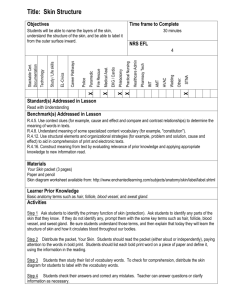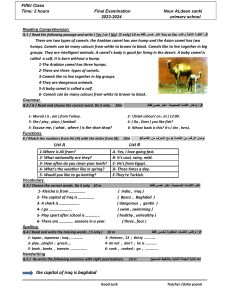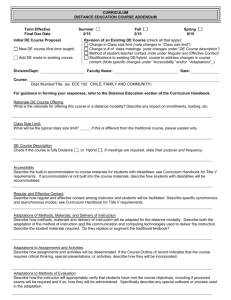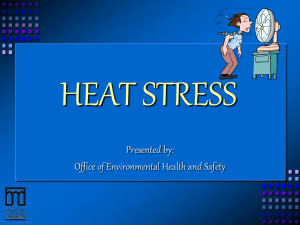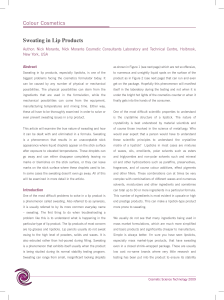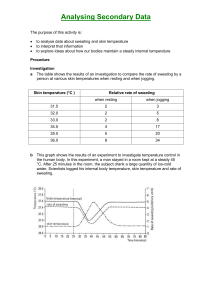It’s No Sweat for Camels
advertisement
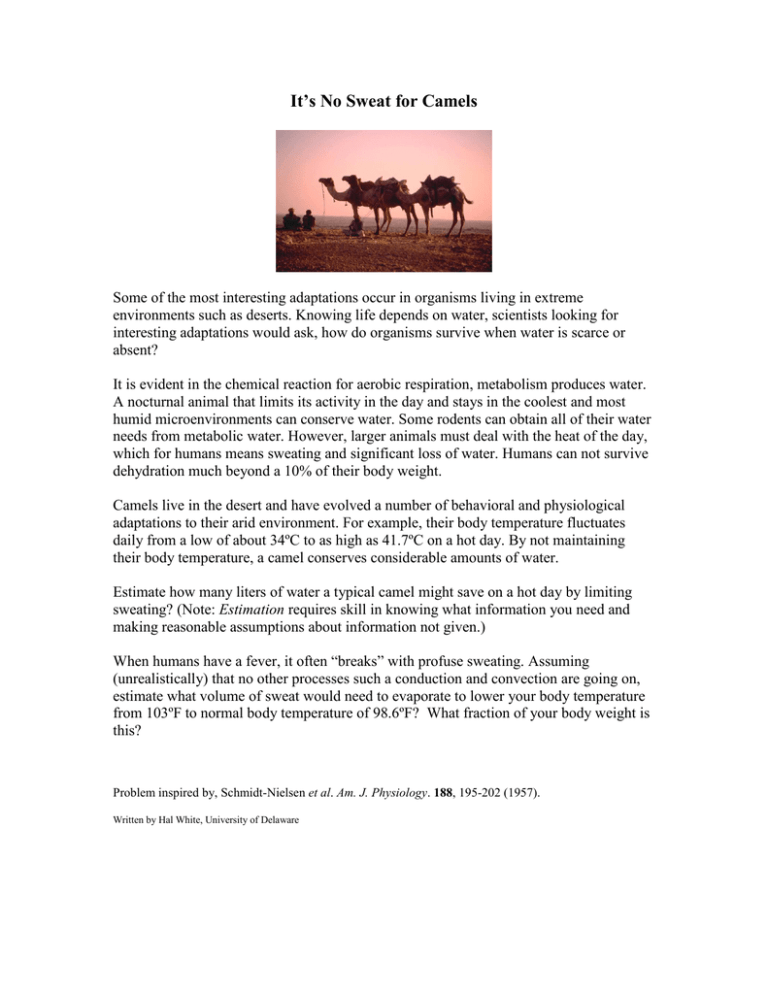
It’s No Sweat for Camels Some of the most interesting adaptations occur in organisms living in extreme environments such as deserts. Knowing life depends on water, scientists looking for interesting adaptations would ask, how do organisms survive when water is scarce or absent? It is evident in the chemical reaction for aerobic respiration, metabolism produces water. A nocturnal animal that limits its activity in the day and stays in the coolest and most humid microenvironments can conserve water. Some rodents can obtain all of their water needs from metabolic water. However, larger animals must deal with the heat of the day, which for humans means sweating and significant loss of water. Humans can not survive dehydration much beyond a 10% of their body weight. Camels live in the desert and have evolved a number of behavioral and physiological adaptations to their arid environment. For example, their body temperature fluctuates daily from a low of about 34ºC to as high as 41.7ºC on a hot day. By not maintaining their body temperature, a camel conserves considerable amounts of water. Estimate how many liters of water a typical camel might save on a hot day by limiting sweating? (Note: Estimation requires skill in knowing what information you need and making reasonable assumptions about information not given.) When humans have a fever, it often “breaks” with profuse sweating. Assuming (unrealistically) that no other processes such a conduction and convection are going on, estimate what volume of sweat would need to evaporate to lower your body temperature from 103ºF to normal body temperature of 98.6ºF? What fraction of your body weight is this? Problem inspired by, Schmidt-Nielsen et al. Am. J. Physiology. 188, 195-202 (1957). Written by Hal White, University of Delaware

